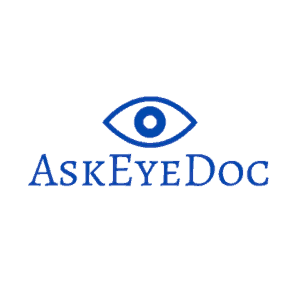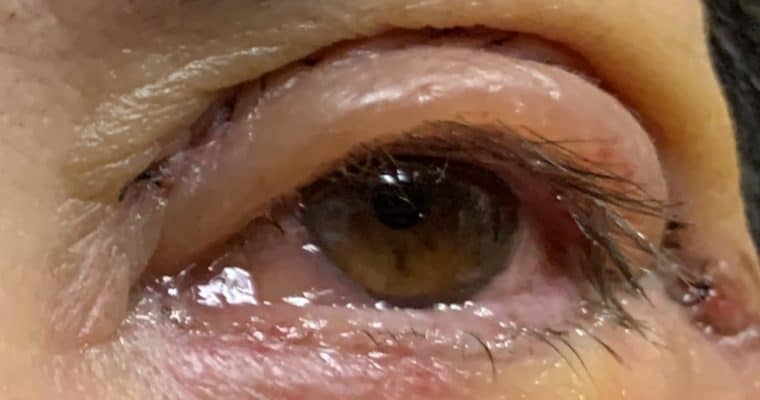Written By: Dr. Stephanie Mulick, O.D.
When you hear the word pinkeye you probably think of a red, infectious eye, but there are many causes of pinkeye or conjunctivitis, some of which are not contagious at all.
Conjunctivitis (pinkeye) defined:
First off let me define the word conjunctivitis. The conjunctiva is the transparent (clear) membrane that covers the sclera (white of the eye) and the inside of the eyelids. When the conjunctiva becomes inflamed it is called conjunctivitis. Conjunctivitis (otherwise known as pinkeye) is not always infectious as most people may think. It can be classified as infectious or noninfectious, lasting less than 4 weeks (acute) or more than 4 weeks (chronic).
There are several causes for conjunctivitis.
Common causes of Conjunctivitis (pinkeye)
Acute (lasting less than 4 weeks) Conjunctivitis:
Infectious (Contagious)
- Bacterial
- Viral
- Herpes
- Gonorrhoea
Non-Infectious (not Contagious)
- Allergic
- Toxic
Chronic (lasting longer than 4 weeks) Conjunctivitis
Infectious
- Chlamydia
- Molluscum Contagiosum
Non-Infectious
- Allergic
- Contact lens-induced (Giant Papillary Conjunctivitis (GPC))
- Toxic
There is also idiopathic conjunctivitis in which the cause is unknown.
Conjunctivitis
| Cause | Common Signs and Symptoms | Infectious or Non-infections |
| Bacterial | Acute red eyes with thick whitish discharge | Infectious |
| Virus | Acute itchy, red eye with watery discharge (often present with cough, runny nose or congestion) | Infectious |
| Herpes | Acute pain, light sensitivity, redness, watery eyes, Blurred vision, sometimes with lesions on the eyelid (affects one eye) | Infectious |
| Gonorrhoea | Acute red swollen eyelids, whitish discharge, blurred vision, swollen lymph nodes | Infectious |
| Chlamydia | Chronic red swollen eyelids, whitish discharge, blurred vision, swollen lymph nodes | Infectious |
| Molluscum Contagiosum | Chronic pain, redness, skin lesions, light-sensitivity | Infectious |
| Allergic | Acute or Chronic itchy, watery eye, sometimes presents with a stringy discharge | Non-infectious |
| Toxic | Acute or Chronic eye pain, redness, eye irritation | Non-infectious |
| Contact lens-induced | Allergic: chronic itchy, stringy discharge; Bacterial: acute red eyes with thick discharge | Non-infectious |
The following is a video on viral and bacterial conjunctivitis from Dr. Peter Joson, MD.
Treatment for Infectious Conjunctivitis
As previously stated infectious conjunctivitis can be caused by bacteria, virus, herpes, Gonorrhoeal, Chlamydia, and Molluscum Contagiosum. According to the study Efficacy of topical antibiotic therapy in acute conjunctivitis in children 72% of bacterial conjunctivitis self-resolve without the use of antibiotic drops in 8-10 days. However, it is always best to see an eye doctor if you have signs of bacterial conjunctivitis.
- Always remove contact lenses and do not use them until your eye doctor specifies that it is ok to resume use.
- An antibiotic drop or oral antibiotic may be necessary
- Use over-the-counter lubricating drops at least 4-6 times per day (review my post on Artificial tears)
- Continue use of all prescribed eye drops (especially glaucoma eye drops) unless specified otherwise
Treatment of Non-infectious Conjunctivitis
Non-infectious conjunctivitis would include Allergic, Toxic or Contact lens-induced Giant Papillary Conjunctivitis
Allergic conjunctivitis can be acute or chronic depending on the cause of the allergy. Using over-the-counter allergy eye drops or cold artificial tears can be helpful for reducing the symptom of itchy eyes. If you suffer from chronic allergies having allergy testing can be beneficial to narrow down the cause of the allergy. However, some allergens cannot be avoided like dust and pollen.
If you had a chemical splash into your eye, immediately rinse it with saline or cool water for at least 15 minutes. Try to hold your eye open while you flush it with water.
If you have a contact lens in, try to remove it if possible.
For the treatment of Giant Papillary Conjunctivitis which occur in contact lens wearers and sometimes in patients with a prosthetic eye, your eye doctor may prescribe a steroid eye drop that you will need to use as directed. Usually, discontinue contact lens wear will resolve the condition.
Conclusion
If you are suffering from a red, irritated eye it is always a good idea to have an eye exam. Depending on the etiology your eye doctor may prescribe topical eye drops or oral medications. Always discontinue use of contact lenses and use artificial tears at least 4 times per day until you can see an eye doctor for a thorough evaluation and treatment plan.


